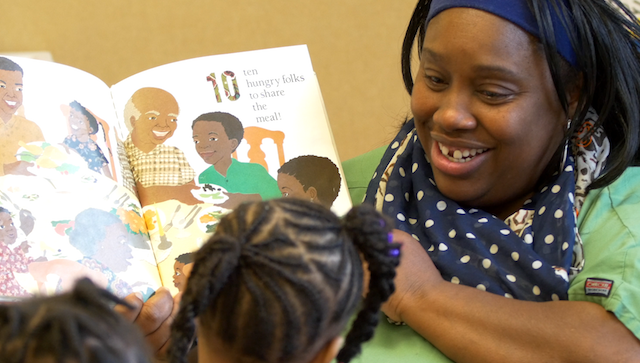Series: Book Ideas
Count on Feasting: Delectable Holiday Math Activities

The holidays are coming up, and usually that involves a lot of eating. This can provide plenty of opportunities to find math all around us. Problems surrounding the questions of “how many do we have,” “how many do we need,” “how much is enough,” and “what might be too much” can lead to any number of fruitful holiday math activities. Several books support this line of thinking and will make these holiday math activities especially fun for children.
Preschoolers and kindergarteners will enjoy counting up the foods and guests in Feast for Ten by Cathryn Falwell. To create a home-school connection project, invite families to create their own “Feast for…” book. Each family will count up how many of their relatives they want to invite to a feast and then will pick favorite foods to buy, following the model of the book. Students can bring in their individualized books to share during group time.
Another possibility for all ages is the delightful Too Many Tamales by Gary Soto. You can use the story to involve children in thinking about how many of the 24 tamales Maria and her cousins might have to eat each if there were 3 of them, 4 of them, or 6 of them, using a “fair share” problem approach. The class might have fun discussing how many eaters would turn the number of tamales each consumes from being “too many” to “just right.” This discussion could deepen children’s thinking about personal tastes and needs.
Mary Ann Hoberman’s One of Each is another great book that considers the idea of “just right” while reinforcing the idea of sharing and one to one correspondence. In this book, the main character has one of everything — one chair, one plate, and so on. This works perfectly for him until a friend visits and he has to re-question “how much is enough.”
To extend the feasting fun math, distribute simple standard recipes for tamales or other favorite holiday fare — for more personalized learning, students’ families could even provide the recipes. Then have children work in small groups to double, triple, or halve the recipes for an extra large or small crowd.